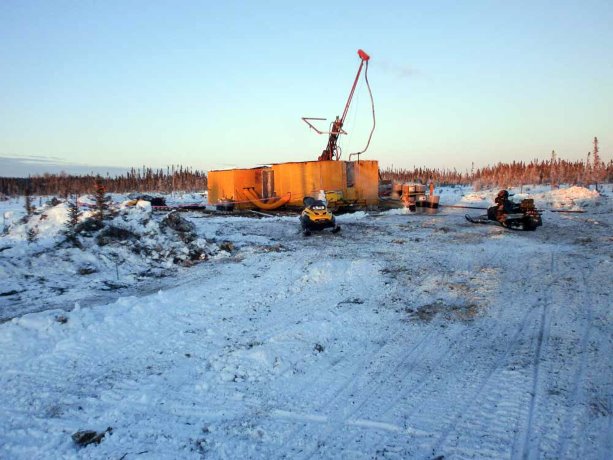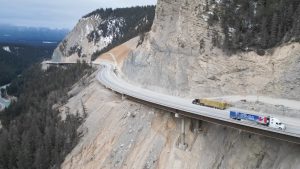Canadian governments need to step up to support mining-related infrastructure or else the predicted recovery of the sector after several slow seasons will be threatened, says a recent report from the Mining Association of Canada (MAC).
Support could come through funding for projects that bring power and transportation networks to northern and remote communities including those of First Nations and also by ensuring the Canadian Infrastructure Bank (CIB) has a mandate that includes support for remote mining projects, said MAC.
The report, released in February and titled Facts and Figures of the Canadian Mining Industry 2016, encourages the federal government to ensure "the CIB has a mandate to facilitate economic development, and the flexibility to accommodate remote and northern projects…critical to responsibly opening up the North, addressing climate change, and facilitating the government’s robust indigenous reconciliation agenda in these regions."
Brendan Marshall, vice-president of economic and northern affairs for MAC and author of the Facts and Figures report, said the mining sector is poised for a rebound after several seasons of poor results. But an uncertain federal regulatory regime, the recent diminishment of mining tax credits and human resources challenges in addition to the infrastructure gap are all negatives threatening the recovery.
The report notes that even at the bottom of a downturn caused mainly by low commodity prices, the industry accounted for 19 per cent of the value of Canadian goods exports in 2015 and directly employs more than 373,000 workers. The mining sector is the biggest per capita employer of indigenous workers in the country. Toronto is the global hub for mining finance and the Toronto Stock Exchange and TSX Venture Exchange were home to 57 per cent of the world’s publicly listed mining companies in 2013, MAC reported.
But foreign direct investment into Canada’s mining sector dropped by more than 50 per cent year-over-year in 2015. Canada remained the world’s top destination for nonferrous exploration spending in 2015, MAC reported, but experienced a 19 per cent decrease in allocations. It’s something MAC said needs addressing immediately, starting with domestic policies.
In explaining MAC’s infrastructure plea, Marshall noted the collaborative role the sector currently plays with the federal government in remote regions of the country.
"Let’s look at the north as an example," he said. "In the Northwest Territories (N.W.T), we build power infrastructure, railways, roads, telecommunications, air strips. The industry has contributed substantially to the built environment in that territory.
"If you look at Nunavut, the longest single road in that territory, a 110-kilometre road, was financed and constructed 100 per cent at the private expense of (gold miner) Agnico Eagle."
And so, he said, with the Liberal government stating among policy goals that it intends to grow the economy, expand infrastructure for remote and northern communities, help develop First Nation partnerships and take action on climate change, it should more directly recognize the role the mining sector can play in helping achieve those goals.
For example, on climate change, remote First Nation communities often use unclean and inefficient diesel power, Marshall said. By funding clean hydroelectric power transmission to remote areas with exploitable mineral wealth, the government would be encouraging indigenous economic activity and furthering its green agenda at the same time, he said. The MAC report lists dozens of mining opportunities across Canada representing a combined proposed capital investment of $145 billion. Seed infrastructure funding contributed by the federal government from its $186-billion Investing in Canada Plan could be the catalyst needed to launch a number of those major projects, said Marshall.
Asked for specific examples of projects ripe for federal support, Marshall acknowledged the Ring of Fire in northern Ontario as the most well-known potential project where investors have asked for government infrastructure funding and also mentioned the Yukon Resource Gateway Project, where the Yukon government is looking for federal support for three segments of roadways to improve the economics of several mining projects; the Slave Geological Province in the N.W.T. where proponents have discussed the need for a roadway for decades, he said; the Nunavut Greys Bay Port and Road project, where a roadway and port development would connect mineral deposits to Arctic shipping routes; and the Plan Nord in northern Quebec.
Historically, Marshall said, traditional infrastructure funding formulas have not worked for remote areas and the north. The territories have Canada’s largest per capita infrastructure deficit. The upcoming federal budget, due March 22, represents an opportunity to address that failure, he said.
"Taking a south-of-60 infrastructure policy and mapping it onto the north hasn’t worked for the territories," he said.
"So what we’re hoping for and advocating for is recognition of northern realities in these proposed funding envelopes as well as the Canadian Infrastructure Bank.
"What would that look like? One avenue, within the mandate of the institution, would be having some space in the language for a broader understanding of the limitations and opportunities for development in the north. The other would be specific project criteria that takes into account, for example, the broader social value of bringing economic development into a region that historically had been without that opportunity."
MAC stated it was pleased to see recognition of the north through a rural and northern communities fund and also mention of green transit funding in the November Fall Economic Statement, Marshall said.











Recent Comments
comments for this post are closed